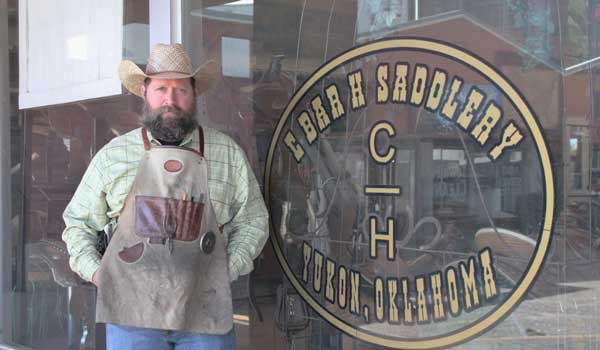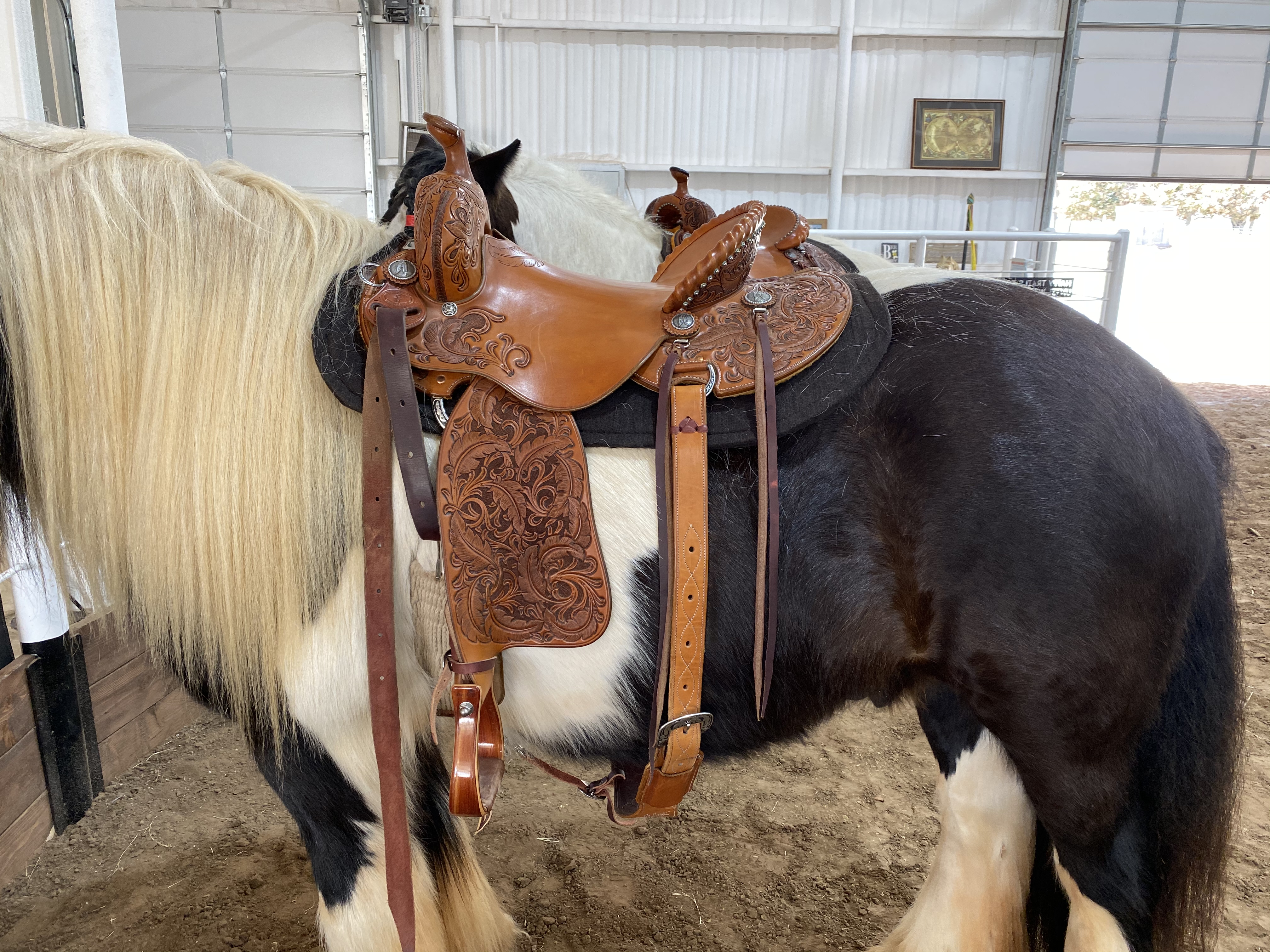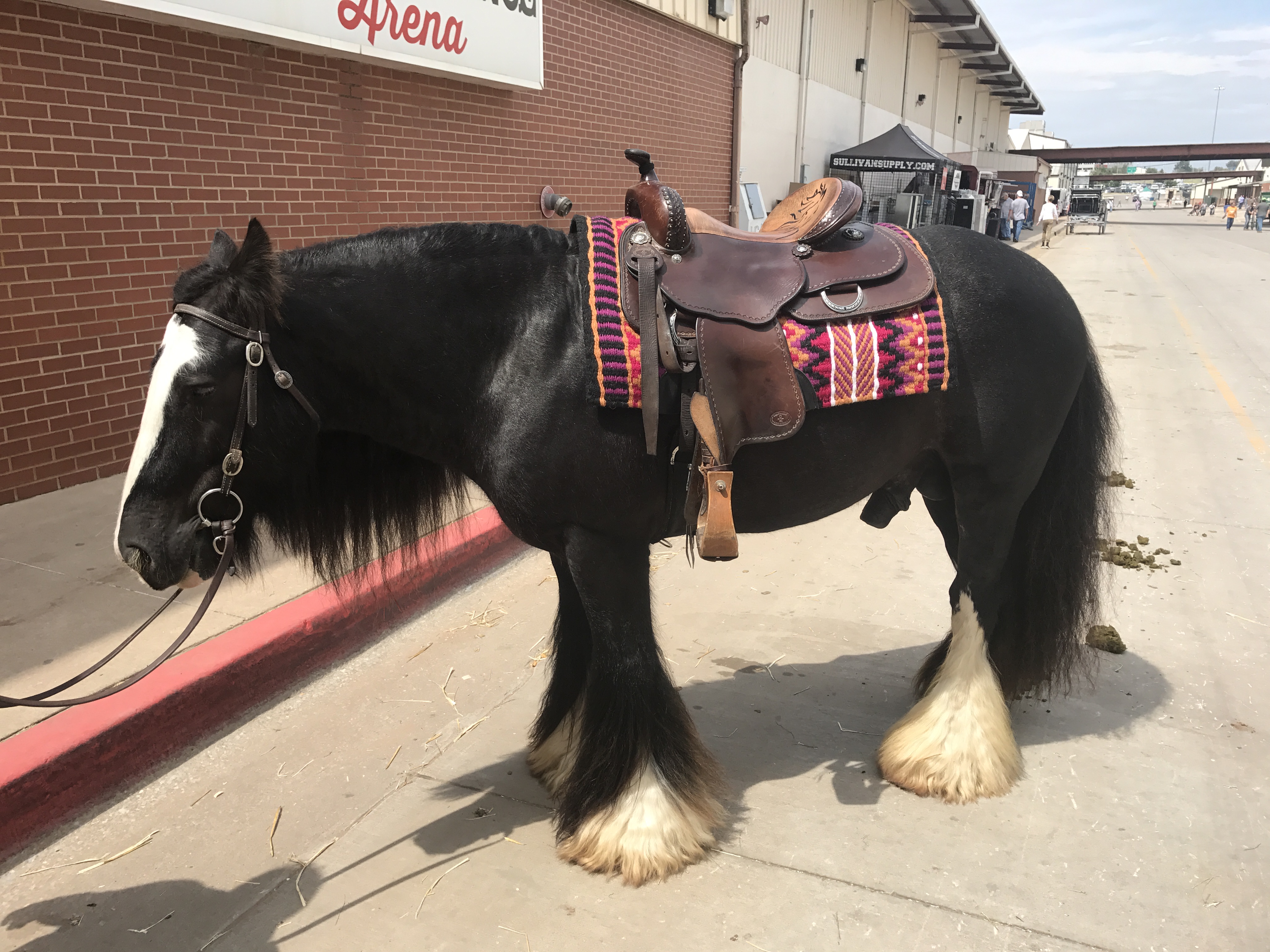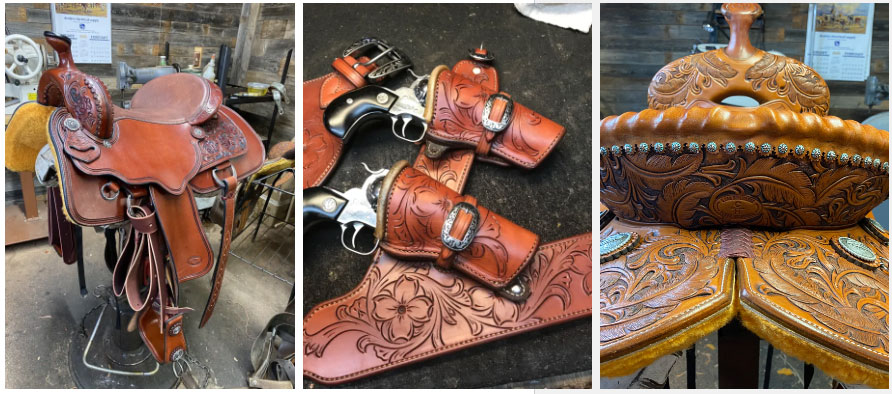
by Nick Pernokas
The June heat came off the tarmac in shimmery waves outside the cattle pens at the Oklahoma City stockyards. It was just another sale day, and the cowboy enjoyed moving the cattle up the alleys on horseback after they were sold. It was just a part-time job, but it let him get out and do a little cowboying. When his sweaty mare tired, the cowboy borrowed another mount. He changed the saddle over to the gelding at his stock trailer. Both horses were tied next to each other and the cowboy ducked under the gelding’s neck to adjust his breast collar. In the slow-motion unfolding of events that is familiar to any horseman that’s been in the wrong place at the wrong time, the gelding set back. The lead rope was stretched taut from horse trailer to sitting horse, almost to the breaking point. Almost. The horse rebounded up the lead with both feet in the air in front of him. One foot caught the cowboy over his left eye, breaking his neck. He was able to roll under the trailer and push himself with his feet to the back of the trailer.
“I couldn’t feel my arms or my legs,” remembers Clinton Hole.
Unable to see out of his blood-filled left eye, Clinton laid on the ground and shouted weakly for help. A truck driver, who was filling out paperwork in the parking lot, heard him and came to his aid.
Clinton’s father, Rollin, was a pastor. Originally from Indiana, Rollin traveled the rural areas of Kansas and Oklahoma. Many times, Clinton rode along with him and this gave him his first taste of the farming and ranching community.
When Clinton got out of high school in Newton, Kansas, in 1991, he discovered the world of bull riding. Clinton competed in regional associations like the Central Plains Rodeo Association. Clinton earned his nickname, “Doc,” on the rodeo circuit because he bore a resemblance to Doc Holliday in the film Tombstone. Between buck outs and rodeos, Clinton realized he enjoyed fixing gear for his fellow bull riders.
Clinton began hanging around at a local horse trainer’s place. The trainer trained western pleasure horses so Clinton was exposed to a new discipline. Clinton volunteered to chip in with the chores and in return he was given a few lessons. He also began to develop more of an appreciation for saddles.
Clinton rode bulls for about eight years. By now, he had a commercial truck driving license and was driving for a local company during the week and rodeoing on the weekends. In 1998, Clinton decided to quit a job driving heavy equipment and go to horse shoeing school in Purcell, Oklahoma. Clinton liked Oklahoma so when he hung out his shingle as a horse shoer, he moved to Kingfisher, Oklahoma, where his dad was living. He also began starting a few horses. One of these was a nice mare that a friend had given him. Clinton got her used to guns because he wanted to be able to take her hunting. A chance invitation to a mounted shooting practice proved that Clinton’s training was sound. The mare took to the pair of 45’s being fired off her back immediately. Soon Clinton was successfully competing in mounted shooting competitions. In 2004, he was the Oklahoma Men’s State Champion in mounted shooting. A national and world championship soon followed.

In 2005, Clinton was shoeing horses in Bethany, Oklahoma, at the Southern Nazarene University. He began dating Mindy, who was one of the managers of the horse program there. Mindy had started out riding English and jumping. At SNU she coached the Intercollegiate Horse Show Association team.
In 2006, they were married. Clinton started doing a little leather tooling with some old Tandy tools. He also repaired a few saddles.
“I rode my share of junk early on and started learning what was good and what wasn’t.”
In 2007, Clinton decided that he’d like to learn how to build a saddle. He searched on the internet for a school that would fit in with his horseshoeing schedule. Don Atkinson, a saddlemaker in Kerrville, Texas, offered a two- or three-week course where a student could build a saddle. After an hour-long phone conversation, the two men clicked. Clinton headed to Kerrville.
“Walking into his shop was like walking back in time,” remembers Clinton.
Within three weeks, under Don’s guidance, Clinton had built his first saddle and had worked on his tooling as well.
“You’re not going to learn how to build a saddle in two weeks, but I already knew my way around a saddle. I’d already done some repair work, and I’ve always been mechanically inclined. The process of building a saddle is very mechanical.”

Clinton felt that Don really taught him how to build a saddle in layers. Each layer would cover any of the inherent imperfections from the construction process in the layer before, until the final layer provided the finished look.
Clinton ended up with a nice Wade saddle that was patterned after some of the ones Don was building for the Texas Rangers at the time. It had butterfly skirts and was trimmed out with graduated conchos around the skirt and the back housing.
When Clinton finished the saddle, he heard the words that every student wants to hear. Don told him that he did a good job, that he was proud of him, and that it was time for him to go home and start building saddles. When he returned to Oklahoma, Clinton started building and repairing saddles in his in-law’s garage. His first project was the restoration of an old saddle and saddletree. Clinton stripped the tree down, fiberglassed it and then he built a new saddle from scratch on it. He entered it in the leather contest at the Oklahoma State fair and won the “Any Item Tooled” category.
In 2009, Mindy was working for a legal office in Yukon, Oklahoma. She noticed a nearby business in the old part of town that was vacant. The building had the charm of a vintage structure with old tin ceilings and floral wallpaper. The couple knew that this was the perfect place for a saddle shop.
C Bar H Saddlery opened in June, but two weeks later disaster struck when Clinton had a wreck with a horse in the OKC West stockyards. After four hours in the ER, Clinton was sent home. He still had no feeling in his left arm. Clinton was not in a good place for a left-handed saddlemaker. A week later, a sports medicine doctor took another x-ray and diagnosed his broken neck. A surgery followed, but Clinton still had to deal with hand problems. Six months of physical therapy followed, while a friend helped him in the saddle shop.
“It was a rough go.”
The work became more like therapy for Clinton to regain the use of his hand, and it kept him going.
In 2011, the old building began to have structural problems and Clinton found a new shop in Yukon’s Old Mill Plaza. The 1700-square-foot floor space gave him plenty of room for his saddle business to spread out. The Holes also moved outside of town to some ranchland that they owned. In 2013, a tornado leveled everything that they’d fixed up on the ranch.
That same year, Clinton became involved with the Gypsy Vanner breed of horses. This short and stocky breed had been gaining in popularity in the Southwest. The Gypsy Vanner shows offered a multitude of classes. The horses were wider than most Quarter Horses, which created a saddle fitting problem. Clinton was approached by some breeders from Texas, who asked him if he could fit and build a saddle for their horses.
“It was wider than anything I’d ever built before.”
Clinton used a barrel saddle bar, because the Gypsy’s backs needed a short bar, and widened the bar spread. The gullet had to be opened up to seven inches and the bar angle flattened.

After he was successful in creating the saddles that they needed, word of mouth brought more Gypsy Vanner owners to his doorstep. Today the “Gypsy” saddles account for over half of the saddles that Clinton has ever built. He has sold Gypsy saddles from coast to coast, and into Canada. Cosmetically they vary according to the rider’s taste.
“I had to go where the market was taking me.”
Clinton personally likes the Wade saddles, but swell fork saddles with a cutting style front are really popular in his area. He feels that his style of construction has been heavily influenced by Don Atkinson.
“I don’t want to relegate myself to one style. I really enjoy barrel saddles and working cowboy saddles. But I’ll build what anybody wants.”
Recently, Clinton went to master engraver Jeremiah Watt to learn how to engrave. Clinton already had the equipment, so he was off and running when he returned home. He hopes to really up the game on his saddles by doing his own silver work.
Clinton continues to try to improve his work in other ways, like attending some of the TCAA workshops. In fact, a personal goal of Clinton’s is to be a member of the TCAA someday. He passes on his own knowledge by having saddlemaking schools that are patterned after the one he attended at Don Atkinson’s.
Clinton’s base price for saddles is $4000.


To find out more about Clinton, you can call C Bar H Saddlery at 405-494-7780, or go to cbarhsaddlery.com. You can also find Clinton on Facebook and Instagram.
Clinton Hole, 316 Elm Ave, Yukon, OK 73099
This article originally appeared on Shop Talk Magazine and is published here with permission. All photos and courtesy of Shop Talk Magazine.
There are lots of good articles in our section on Tack & Farm.
































